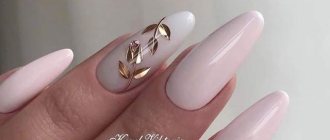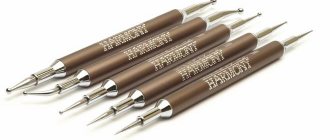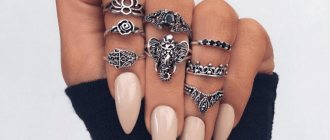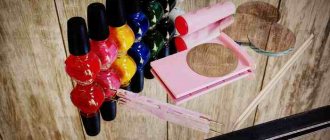Today, manicure and nail care have a special place in the beauty industry. Clean and tidy hands indicate a woman’s well-groomed nature and her desire to look perfect under any circumstances. Among other things, now many men take care of their nail plates by doing a standard hygienic manicure. Few people know where the tradition of monitoring the condition of one’s hands comes from, but it is clear to everyone that its origins are hidden in the deep past.
The fact that the history of manicure has very ancient roots is evidenced by excavations of an Egyptian tomb in which the remains of Hanumhotep and Niankhanum were found. These are the names of two representatives of the retinue of Pharaoh Nuser, who bore the honorary title of “master and guardian of nails” of the great ruler. People who lived in those distant times 2400 BC treated the masters who mastered the art of manicure with special respect.
At that time, nails were decorated not only by women, but also by men of noble blood, since there were no gender differences in manicure. Before an important battle, Roman and Assyrian warriors always painted their nail plates with multi-colored dyes, performing a certain ritual.
Interesting Facts
"Manus" - hand, "cura" - care. This is exactly how the familiar word “manicure” is translated from Latin. A set of cosmetological actions aimed at improving the condition of the nail plate and hands, as well as improving their aesthetic appearance.
Some interesting facts:
- The first manicure appeared more than 5,000 years ago. Then natural henna or charcoal helped to add color, and natural gold tools were used to process the nail bed and cuticle.
- A little later, 2,000 years later, slaves received permission to have manicures. They were allowed to paint short nails and use only subtle colors;
- During the Inquisition, painted nails were considered a sign of witchcraft. Fashionistas were burned at the stake;
- Only in 1914 was the first officially registered patent for a nail protection product, in other words, varnish.
Initially, manicure was used to maintain healthy nails and hygiene, and after just a couple of hundred years it also became an indicator for determining class.
New York dispute
May 7, 2015 New York Times
journalist Sarah Maslin Nir broke the two-part story "The Price of Beautiful Nails" and "Perfect Nails, Poisoned Workers" about abuses in New York City salons involving mistreatment of workers and associated health risks. As a result, New York Governor Andrew Cuomo took immediate action on May 11, 2015, announcing an Interagency Enforcement Task Force to combat abuses in the nail salon industry.[10]
How manicurists and pedicurists appeared
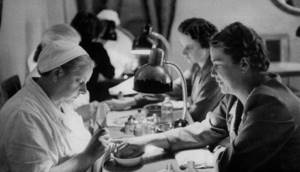
Masters appeared almost immediately after the emergence of the tradition of nail care. Excavations in Ancient Egypt have proven that special people cared for the hands of representatives of the upper classes even before our era.
In one of the tombs, in addition to court servants and other associates, the remains of the pharaoh’s nail guardians were found. It was these people who took care of nails and painted them.
Masters appeared in Russia only at the beginning of the last century. It was then that car polish appeared and began to be used to decorate nails. Initially, there were not many manicurists, but with the development of progress and an increase in the range of care options, interest in this profession also grew.
Beautiful well-groomed nails with a professional manicure are the dream of every modern woman. But few people know that the history of manicure goes back more than 4,000 years. The words "manicure" and "pedicure" come from the Latin words manus ("hand"), pedi ("foot") and curare ("care").
Beautiful manicure
Today, some people consider manicures and pedicures to be cosmetic procedures, while others consider them to be hygiene procedures. Modern manicure is a real art. And the work of nail service masters can be real masterpieces
Ancient traditions
In ancient times, a lot of attention was paid to nails; they demonstrated not only one’s position in society, but also a person’s class category. Thus, in ancient Rome, only representatives of a noble family had the right to grow their nails and paint them in a prescribed color. Bright, rich colors indicated belonging to the royal family. Slaves were forbidden to have long nails.
The ancient Chinese developed a whole production of products for decorating nail designs:
- wax
- gelatin
- egg yolks
The favorite color of Chinese women is gold or silver. Some time later, red and black manicure colors came into fashion. The Chinese put long tips made of gold or silver on their fingers. This method can be compared to the nail extension technique. People of great wealth grew their nails up to 12 cm to demonstrate to others that they did not do manual work.
In Ancient Greece, people who wanted to hide defects on their nails turned to a special master who skillfully knew how to mask cosmetic imperfections with manicure and pedicure.
Ancient manicurists used small scissors to trim nails and painted over the nail plates, but only up to the holes. This was due to the fact that in Ancient Greece the Moon was associated with a lunar deity. The servants always included a slave who looked after the nails of the owners. Since a beautiful manicure among the Greeks was considered an indicator of belonging to the aristocracy, women and men were expected to have an impeccable manicure.
Indian women applied henna to their nails, which determined their belonging to any of the existing castes.
Indian manicure with henna. Ancient Egypt is considered the very first human civilization to introduce nail polishing. Queen Cleopatra and the beautiful Nefertiti used red tones of varnish. The emotionality of the first was emphasized by red varnish, and the tenderness of the second by ruby. It is noteworthy that Julius Caesar’s manicure was done by Cleopatra herself.
The pharaohs constantly surrounded themselves with a retinue, including a specially trained slave who was responsible for the condition of their nails. Perhaps this was one of the first manicure masters. The emergence of such a trend in the art of designing the nail plate as nail art is associated with Ancient Babylon, in which the local nobility applied a coating of pure gold to their nails. Of course, in today's time, few people would risk making such unreasonably large expenses.
History of European manicure
The history of manicure in Europe is radically different from the development of this trend in other countries. Since Europeans considered chastity and modesty to be the main moral values, only representatives of the oldest profession could afford to paint their nails. Simple girls kept their nails clean and tidy and nothing more. A big impetus for this attitude was the policy of Queen Victoria, who was reputed to be a virgin queen who preached Puritan decency and purity. That’s why the only manicure accessories women had were pieces of suede for polishing their nails. Today, special polishing devices are made based on suede material.
French manicure
It was this era that is credited with the beginning of French manicure, the technology of which is so popular today. Jeff Pink, the president of the famous American company ORLY, is considered the inventor of such a fashionable and sophisticated coating as French. In 1976, one of the Hollywood directors asked Pink to come up with a universal nail coating for his actresses, so as not to paint their nails for each stage image and costume. Since everything natural is recognized as universal, it was decided to cover the nail with a natural peach color and paint the edge white. This covering was in perfect harmony with all outfits.
Manicure began to be called French at the request of the author himself, because at that time all the best things were made in France. This commercial move was an incredible success, and for many years now it has been the epitome of elegance and beauty.
Origin of Slavic manicure
The history of manicure in Rus' dates back to tsarist times, when every peasant family honored the tradition that nails could be cut only on Thursdays. On another day, this could bring disaster to the family. There was a ritual according to which cut nails had to be burned so that the person would not be damaged. The sick were treated with nails cut off and burned to ashes. In Belarusian villages they sacrificed their nails to the brownie so that he would patronize them and their home.
In Russia, manicurists began to appear in the 20s. XX century. These years are famous for the appearance of pink polish, which gave rise to the famous Luna manicure, which lasted for more than 30 years. Its authorship rightfully belongs to makeup artist Michel Menard. Thanks to Frederic Sleck, who was looking for a way to glue nails, the acrylic method appears. Doctor Koronyu came up with a safe cuticle remover in 1917. It was with his light hand that manicure sets began to be produced.
At the end of the 20th century, the era of drawings on nail plates and decorating them with all kinds of rhinestones began.
There are many manicure options that are successfully used these days: classic, European, French, children's, hardware, hot, spa manicure, Japanese, men's and others.
Pedicure and its history
The history of pedicure goes back to ancient times. Pedicure originated in Ancient Egypt. Due to the vulnerability of the feet, the ancient Egyptians paid great attention to the skin on the feet: they used various aromatic oils to nourish and soften the feet, and performed massages to improve blood circulation. It was customary for nobles to kiss their feet. Therefore, in order to remove the unpleasant smell of feet, incense was added to the water in which they were washed. The Egyptian Queen Cleopatra had a daily treatment in which aromatic oils were rubbed into her feet and dried with peacock feathers.
French nobles had a ritual of kissing ladies' feet, so women paid great attention to their feet, their beauty and purity. To care for the heels to avoid corns, a special silver knife was used.
Today, some expensive spas use fish pedicure, in which the small Garra Rufa fish helps remove dead skin on calluses and heels. This method is not only safe, but also a healing procedure for the feet.
Currently, to keep feet in perfect condition, the cosmetology industry offers a huge number of foot care products: antiperspirants, aromatic essential oils, peeling creams and much more. Tools and technologies are constantly being improved, which helps improve the medical and aesthetic treatment of feet, making them healthier and more attractive.
Based on: dekornogtei.ru
Follow us on social networks
| facebook.com | vk.com | instagram.com |
Ancient Babylon

Doing manicures was the prerogative of men, and even then the first color palette appeared. Representatives of the upper classes painted the nail plate black - a sign of humility, and the lower ones - green. It was the Babylonian manicurists who invented the most expensive set of tools made of pure gold, found during excavations of burials. The Babylonians also became the founders of nail art - the richest representatives of the people could decorate their nails with pieces of gold.
Ancient Egypt

Nefertiti and later Cleopatra were famous for their beauty and paid great attention to detail. Hand care involved not only covering with color, but also moisturizing the skin of the hands with oils. When choosing a color, Cleopatra preferred rich red, and Nefertiti preferred a ruby shade. By the way, despite her well-known eccentricity and willfulness, Queen Cleopatra gave Julius Caesar a manicure with her own hands.
Paraffin treatment
| This section do not quote any sources . |
Hands or feet can be covered with melted paraffin candle to soften and moisturize. Paraffin wax is used because it can be heated to temperatures above 95°F (35°C) without burning or injuring the body. High heat promotes deeper absorption of emollients and essential oils. The wax is usually infused with various herbal ingredients such as aloe vera, azulene, chamomile, or tea tree oil, and fruit waxes such as apple, peach and strawberry are often used in salons. Sometimes lotion is rubbed onto an arm or leg before applying paraffin. Paraffin treatments are often paid for as an addition to a standard manicure or pedicure. They are often not part of general preparation and are rarely used in most nail salons.
Professional services should not involve immersing clients' hands or feet in a general paraffin bath, as wax can carry disease. Paraffin wax should be applied in a manner that avoids contamination, often placing a portion of the wax in a bag or glove that is placed on the client's arm or leg and covered with a warm towel, cotton glove, or butt to retain heat. Leave the paraffin for a few minutes until it cools down.
Ancient China

Chinese women loved not only to paint their nail plates, but also to surprise with their incredible length. They deliberately did not cut off the overgrown nail in order to show others their importance and demonstrate luxury. To prevent overgrown nails from breaking, the Chinese came up with special protective covers - one for each nail. The tips were made of gold and silver, which made them accessible only to the rich.
Dyeing was a long procedure, especially if a woman wanted a bright crimson color. Natural dye, made from natural components, was applied to the plate from 3 to 14 times. With each new layer the color became more saturated.
By the way, natural plant leaves were used for the procedure, which were filled with dye, wrapped around a finger and secured with thread.
Beautiful manicure statuses for clients

Your manicure is a reflection of you. (Helena Carter)
Manicure is a way of declaring love for yourself, reverent and so effective.
Sometimes a fresh manicure can say more than words.
Money can't buy happiness, but it can give you a damn beautiful manicure. (Coco Chanel)
You can get used to an ugly appearance, but never to negligence in manicure.
Smile because your manicure is beautiful. (Miley Cyrus)
A girl without a beautiful manicure is like a night without stars. (Tami Taylor)
Your hands speak about your style without saying a word. (Tammy Taylor)
Your beautiful hands will say a lot more about your style without a single word.
Life isn't perfect, but your nails can be. (Sandy Valles)
Manicure is a way of declaring love for yourself, reverent and so effective.
Manicure is a woman’s banal desire to look beautiful “to the tips of her nails.”
Well-groomed hands are like a period at the end of a sentence. They complete your look and make you look complete. (Pramal Guering)
Well-groomed hands are like a period at the end of a sentence. They complete your look and make you look complete.
A good manicure is a good reason to feel like a goddess once again.
Your beautiful hands will say a lot more about your style without a single word. (Christian Dior)
19th century France
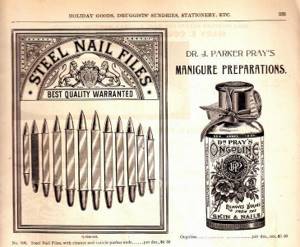
In 1830, trouble happened - the then reigning King Louis acquired a problem in the form of a hangnail. The painful rupture of the skin caused the man a lot of trouble, so Louis ordered to find a doctor who would help get rid of the hangnail. The king’s hands saw dozens of doctors, and only Dr. Zitts was able to cope with the problem. For the procedure, he used a nail file and natural suede and an orange stick. Later, such sets were in the arsenal of every French woman.
Early 20th century

In 1917, Dr. Coronu invented a cuticle softener that did not require cutting the skin.
As soon as the automotive industry stepped forward and introduced car paint varnish to the world, fashionistas immediately found use for it in everyday life. Such a coating cannot be called safe, but what can you do for well-groomed nails? In 1932, the first Revlon nail plate polishes appeared in pharmacies.
Cool statuses about manicure

When my husband started paying for my manicures, he started crying with me when I broke a nail.
Life is an unfair thing: there are so many gel polishes, but not enough fingers.
A woman needs three things to be happy: a manicure, a husband and everything else.
All I want is world peace and a fresh pedicure
I got my manicure done, went to cook, cleaned the sink at the same time, defrosted the refrigerator, washed the floors... now I’ll go get a manicure.
A girl is defenseless only 5 minutes after a manicure.
Nail polish is a strange thing. It seems to have dried out, but it seems not.
In any unclear situation, get a manicure.
The perfect manicure doesn't happen by accident - it happens by appointment.
Manicure in Europe
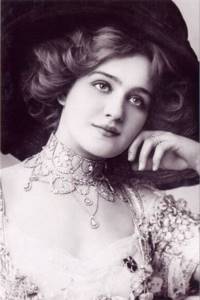
While the whole world rejoiced at the discovery of nail polish, Europe denied bright colors and categorically refused advances in the nail industry. Until 1920, only representatives of the oldest profession could add color to the nail plate. Chaste and modest women only kept their hands clean and occasionally polished the plate with pieces of suede.
Subsequently, special polishing tools based on suede or leather began to be made.
The history of hardware manicure

Caring for nails and adjacent skin using a device is a relatively new procedure. The founder of Gehwol, Eduard Gerlach, should be thanked for the development. While Gerlach was creating unique cream recipes, his son, also Eduard, was studying the basics of foot care and taking his first steps in podiatry.
Podology is the science of foot care and the fight against its main diseases.
Gehwol products for solving foot skin problems
The development of hardware manicure took place in several steps:
- Gerlach Jr. began studying podiatry and thought about developing a unique device for combating rough skin, which would replace mechanical cleaning;
- In 1966, the first developments of a device for hygienic treatment of feet appeared;
- In 1969, the arsenal of podiatrists expanded with the invention of skin cleansing based on dental technology;
- A year later, the first cabinet was released with a built-in device, the ability to adjust power and reduced vibration in the handle. The improved version turned out to be universal and did an excellent job of treating hand nails.
- Only in the early 2000s did a manicure machine appear in Russia.
From 1970 to the present day, manufacturers of manicure cutters have been improving their devices, expanding their capabilities and simplifying the work of craftsmen.
What is hardware manicure, features of its implementation
Etymology
English word manicure
comes from the French word
manure
, meaning "care of the hands", which in turn comes from the Latin manus
,
for "hand" and
cura
, for care."[2]
Likewise, the English word pedicure
comes from the Latin
pes (Genitive pedis)
, for "foot" and
cura
, for care."[3]
Roman toiletries made of cast copper alloy with an oval spoon bowl at one end and a pointed double-leaf end at the other end, used as a nail cleaner.
How did Japanese manicure appear?

Japanese women have always been distinguished by their extraordinary beauty and ingenuity in terms of care. Nails in Japan began to receive attention back in the 8th century, when court ladies began painting them using natural products. Geishas also sought to conform to new fashion trends and followed the rich women, surprising men even more.
Types and technologies of Japanese manicure for nail care and treatment
Since then, manicure in Japan has undergone many changes, but preference is given to products made from natural ingredients. It was the natural substances in the composition of the products that made it possible to distinguish Japanese manicure as a separate area for the treatment of weakened nails.
Trend 2022
The new trend in men's manicure is real nail art. Monochromatic nail polish, multi-colored nails, various designs, ombre manicure, daring inscriptions, and even rhinestones are in fashion. It looks a little unusual, sometimes even shocking, but quite attractive. In fact, despite all the external frivolity, this trend is based on a certain message that reflects the spirit of the times. This is a gender neutral philosophy.
We are already accustomed to the unisex style as a rejection of pronounced femininity. Unisex in the new version also refuses bright masculinity. The only thing that distinguishes men's manicure 2022 from women's is the length of the nails. Men don’t want to wear long nails yet or are simply not used to them yet. Who knows, maybe this will become a trend next year, 2022.
French manicure
It has already been mentioned that the revival of French manicure occurred in the middle of the last century, when the founder of the Orly company released a new natural design suitable for any outfit and holiday.
However, there are references to French at the beginning of the 20th century, when the first pink varnish imitating the color of the nail appeared. Therefore it would be correct to say:
- A coating involving the application of flesh-colored varnish with a translucent free edge was invented at the beginning of the 20th century;
- The name “French manicure” was created by Jeff Pink, who subsequently released a special set for French manicure and modernized the application technology.
